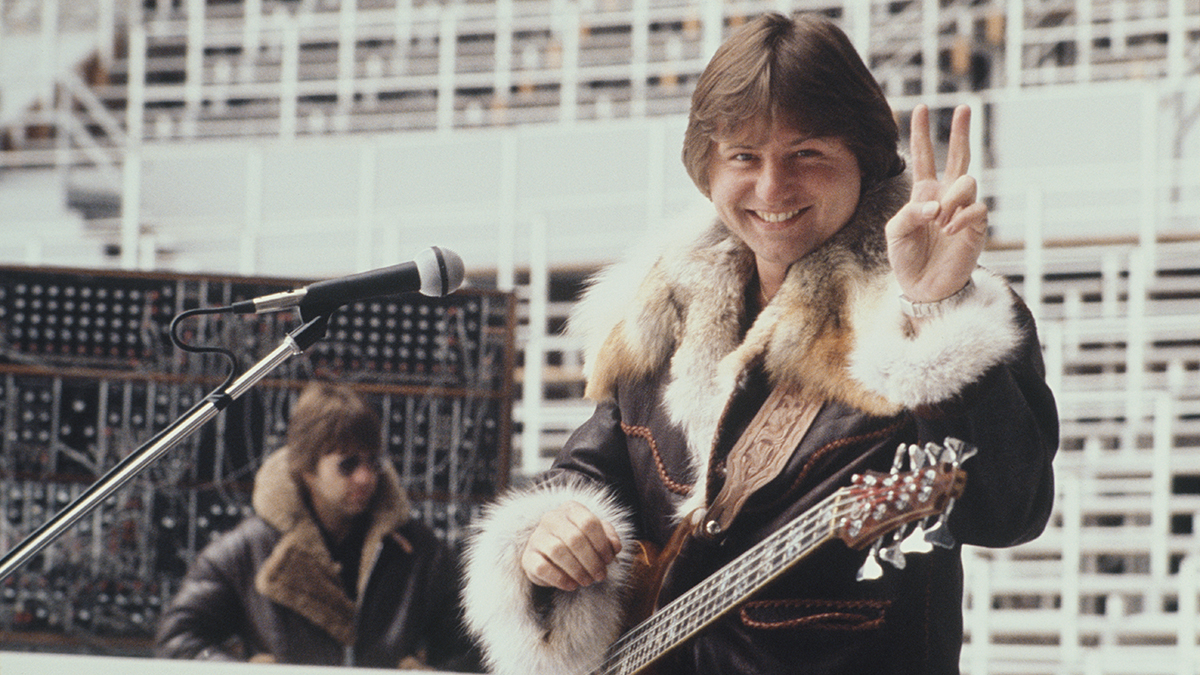“Sometimes bad gear can give you a good idea! I’ll go with whatever’s around. There are no rules”: Code Orange’s Reba Meyers on writing “pure evil” riffs and why she’d rather play a guitar that “sounds a little sh**tier” than a studio classic
New album The Above finds the Pittsburgh metalcore crew pushing at the extremes – but just don't take those clean tones as some kind of '90s revival

Code Orange are one of the most exciting names to emerge in heavy music over the past decade. On new album The Above, guitarist Reba Meyers combines clean melodies with the sound of “pure evil”…
This album feels more positive, almost more hopeful, than your previous records.
“It’s definitely more melodic. That was always inside of me as a writer, but within the context of the band, it wasn’t always necessarily appropriate. Now we’re all a bit more grown-up, I’m able to just go for it.
“People sometimes confuse those cleaner sections as a ’90s thing and I don’t see it that way. They hear a good rock guitar sound and say, ‘Oh, it’s like the ’90s!’ But I’m like, ‘No, it’s just a good guitar sound!’ I don’t want to connect our stuff with being part of some sort of revival.”
There’s still a lot of clashing dyads and tritone stabs in the heavy parts, to be fair!
“Those stabs are so percussive, evoking this sense of anger and hatred against the drums. I’ve been doing that since we were kids. I don’t know where it came from but it will never leave my arsenal. And the tritone is called the devil’s interval because back in medieval times people considered it to be pure evil.
“It’s wild that when I was 10 years old, it created the same exact feelings in me even though I hadn’t heard it before. The human body seems to just connect darkness with that interval – it’s crazy!”
All the latest guitar news, interviews, lessons, reviews, deals and more, direct to your inbox!
You’ve used your EVH 5150III head along with various guitar VSTs over the years. What are we hearing on The Above?
“It was definitely a mix-and-match recording process. I trusted my ears to go with what sounded best and ended up messing around with cabs and mics more than usual. I hadn’t done much of that before. I ended up running my usual EVH head through a Marshall cab with Celestion Greenbacks.
“And I used a Fender Bassman for the more rock-sounding tones because it added a nice warmth to everything. There was a Roland Jazz Chorus for the clean parts on Mirror and The Mask Of Sanity Slips. I probably used plugins less this time, except for some atmospheric kinds of sounds that don’t sound like guitar.”
I don’t want to go to a studio and say, ‘Hey, what’s your nicest guitar?’ and use it for the record because that won’t help me at all. That’s not my vibe.
And how about instruments – was it still mainly your ESP Viper?
“Yeah, plus a Strat with a Hot Rail in the bridge and my Reverend Charger. I just went with stuff that felt good in my hands. I don’t want to go to a studio and say, ‘Hey, what’s your nicest guitar?’ and use it for the record because that won’t help me at all. That’s not my vibe. I’d rather play a guitar that sounds a little shittier or isn’t set up perfectly, but at least I know it inside out.
“And actually, sometimes bad gear can give you a good idea! I try not to overthink gear – I’ll go with whatever’s around. There are no rules. I’d encourage people to find their shit and live with whatever they can get their hands on. There shouldn’t be pressure to find specifics.”
- The Above is out now via Blue Grape Music.
Amit has been writing for titles like Total Guitar, MusicRadar and Guitar World for over a decade and counts Richie Kotzen, Guthrie Govan and Jeff Beck among his primary influences as a guitar player. He's worked for magazines like Kerrang!, Metal Hammer, Classic Rock, Prog, Record Collector, Planet Rock, Rhythm and Bass Player, as well as newspapers like Metro and The Independent, interviewing everyone from Ozzy Osbourne and Lemmy to Slash and Jimmy Page, and once even traded solos with a member of Slayer on a track released internationally. As a session guitarist, he's played alongside members of Judas Priest and Uriah Heep in London ensemble Metalworks, as well as handled lead guitars for legends like Glen Matlock (Sex Pistols, The Faces) and Stu Hamm (Steve Vai, Joe Satriani, G3).
![Code Orange - Swallowing The Rabbit Whole [OFFICIAL VIDEO] - YouTube](https://img.youtube.com/vi/Ctn14oYz0qA/maxresdefault.jpg)


